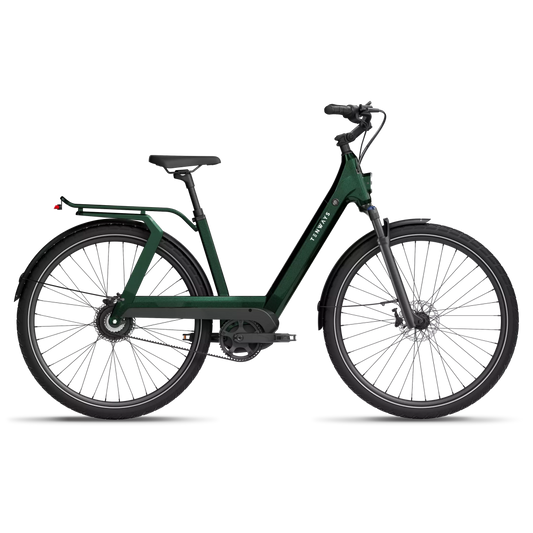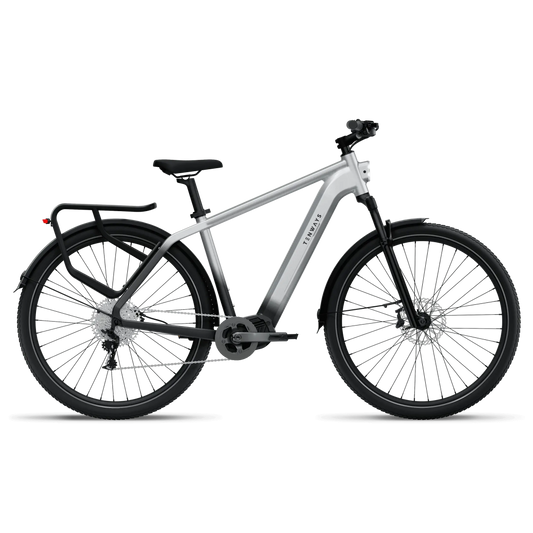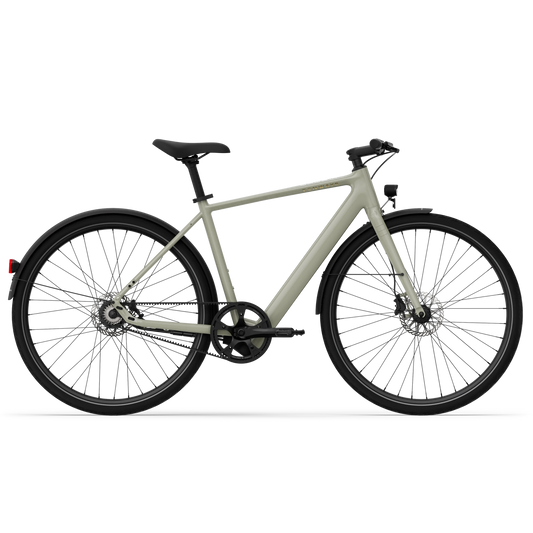Cycling has long been considered an efficient way to lose weight. Depending on the intensity, you can burn approximately 300 to 600 calories per hour, with higher consumption occurring when riding at faster speeds or on hilly terrain. While many may think that electric bikes, with their pedal-assist function, lack the same weight-loss benefits, this is not entirely true.
Despite the electric assistance, riding an electric bike still requires physical effort, effectively promoting calorie burn. This article will delve into how electric biking can contribute to calorie consumption and help you achieve your fitness and weight loss goals.

How to Calculate Calorie Burn While Riding an Electric Bike
The number of calories burned while riding an electric bike can typically be estimated, as the riding process includes both motor assistance and human effort. For a simple calculation, you can estimate calorie consumption based on the physical intensity of the activity.
Calorie Burn Calculation Formula
Where:
• MET (Metabolic Equivalent of Task) is a measure of activity intensity. Different activities have different MET values. For regular cycling, MET values range from 4 to 8, while riding an electric bike usually ranges from 2 to 5, depending on the level of assistance.
• Low Assist Mode MET: 3.6 - 4.5
• Medium Assist Mode MET: 2.6 - 3.5
• High Assist Mode MET: 2.0 - 2.5
• Weight is the rider’s weight in kilograms (kg).
• Time is the duration of the activity in hours.
Example Calculation for an 80 kg Person
If an 80 kg person rides an electric bike for 1 hour using an assist level with a MET value of 3.5, the calorie burn can be calculated as:
Note: These calculations provide an approximate estimate. Actual calorie burn may vary based on factors such as wind speed, road conditions, and riding speed.
Calorie Burn While Riding an Electric Bike
Many people wonder how many calories can be burned while riding an electric bike. Although the pedal-assist feature reduces the physical effort required, significant calorie burning is still possible. Factors such as the level of assist, rider weight, distance traveled, duration, and speed all play a role. Let’s break down calorie burn in various scenarios to give you a clearer understanding.
Calorie Burn Across Different Assist Modes
For example, an 80 kg person can burn approximately 300 calories per 10 kilometers in low assist mode. In medium assist mode, the calorie burn drops to around 200 calories per 10 kilometers. If high assist mode is used, the calorie burn may further decrease to about 150 calories per 10 kilometers.
Calorie Burn for Different Weights (60 Minutes)

Calorie Burn for Different Distances (80 kg Rider)

Calorie Burn at Different Riding Speeds

Factors Affecting Calorie Burn While Riding an Electric Bike
Calorie consumption while riding an electric bike can vary based on factors like gender, age, weight, and height. Additionally, several external factors influence calorie burn:
• Assist Mode: The higher the assist level, the more power the motor provides, reducing the rider’s energy expenditure. Conversely, with lower assist levels, the rider must exert more effort, increasing calorie burn.
• Riding Intensity: High-intensity riding, such as accelerating, climbing hills, or maintaining high speeds over long distances, raises the heart rate and significantly boosts calorie consumption.
• Riding Speed: Faster speeds generally require greater exertion, especially in low assist mode, leading to higher calorie burn.
• Terrain and Road Conditions: Uphill climbs or rough terrain demand more physical effort, thus increasing calorie burn. On smooth, flat roads, the energy expenditure is lower.
• Wind Resistance: Riding against the wind increases resistance and requires more effort, leading to higher calorie burn. Riding with a tailwind, however, is easier and consumes less energy.
• Rider Weight: Heavier riders typically burn more calories, as more energy is required to move both their body and the bike.
• Duration of the Ride: Longer rides naturally increase total calorie consumption, especially if sustained at medium to high intensity.
• Posture and Riding Technique: Maintaining proper riding posture, increasing pedal cadence, or using interval sprint techniques can all impact energy expenditure.

How to Maximize Calorie Burn While Riding an Electric Bike
By adjusting assist modes, choosing suitable terrain and routes, incorporating high-intensity interval training, and integrating electric biking into your daily routine, you can effectively use your e-bike for weight loss and calorie burning.
Choose Suitable Terrain and Optimize Your Route
• Hills and Varied Terrain: Opt for routes with hills or rolling landscapes to increase heart rate and exercise intensity. Climbing consumes more calories than riding on flat terrain.
• Long-Distance Rides: Plan longer routes that allow you to sustain medium to high-intensity riding over an extended period, prolonging calorie burn.
• Reduce Wind Resistance: Adjust your posture in headwind or tailwind conditions. Lowering your body position reduces drag, allowing for higher speeds and more calorie burn.
Utilize Effective Riding Techniques
• High-Intensity Interval Training (HIIT): Add sprints or high-intensity intervals during your ride. For example, alternate between a few minutes of steady riding and short bursts of intense effort. This method significantly increases calorie burn.
• Increase Cadence: Boost your pedaling rate (RPM) to elevate your heart rate while maintaining a steady riding posture. A higher cadence can enhance cardiovascular efficiency and raise overall energy expenditure.
Adjust the Assist Mode
• Low Assist: Use a low assist mode to engage your leg muscles more, increasing energy output and calorie burn.
• Flexible Adjustment: Use moderate assist on uphill sections to prevent fatigue, but reduce or turn off assist on flat or downhill segments to increase physical effort.
Tailor Intensity to Your Goals
• Medium to High-Intensity Training: For maximum calorie burn, aim for moderate to high-intensity rides, keeping your heart rate between 70-85% of your maximum.
• Long-Duration Low-Intensity Rides: For a more sustainable calorie burn, choose long, low-intensity rides, maintaining a steady heart rate while extending total ride time.
Incorporate Biking Into Daily Life
• Commuting: Replace traditional transportation with biking for commutes, such as riding to work, school, or running errands. This not only boosts calorie burn but also enhances overall health.
• Short Trips: Bike to meet friends, shop, or explore new areas. By combining everyday activities with biking, you can effortlessly increase your daily exercise.
Add Challenges to Your Rides
• Cycling Challenges: Participate in biking events or set personal goals, such as riding a specific number of kilometers each day. These challenges can keep you motivated and maintain a consistent riding routine.
Health Benefits of Riding an Electric Bike
• Improves Cardiovascular Health: Cycling raises your heart rate and promotes better blood circulation, helping to strengthen the heart and reduce the risk of cardiovascular diseases.
• Enhances Muscle Strength: Even with electric assistance, cycling engages leg muscles, helping to build strength in the legs and improve core stability.
• Reduces Joint Pressure: Unlike high-impact activities like running, riding an electric bike places less strain on the knees and ankles, making it an ideal exercise for joint protection.
• Boosts Mental Health: Outdoor cycling can alleviate anxiety and stress by promoting the release of endorphins, improving mood, and enhancing overall mental well-being.
• Strengthens Lung Function: Regular riding helps improve respiratory function, increases oxygen intake, and boosts overall endurance.
• Promotes Social Engagement: Group rides can foster social connections, motivate people to stay active, and enhance social well-being through shared experiences.
Final Words
Riding an electric bike is not only a fun and efficient way to burn calories but also offers comprehensive health benefits. It helps boost cardiovascular function, strengthen muscles, protect your joints, and improve your mental well-being. By seamlessly combining fitness and transportation, every ride becomes a powerful and enjoyable experience filled with energy and excitement!











